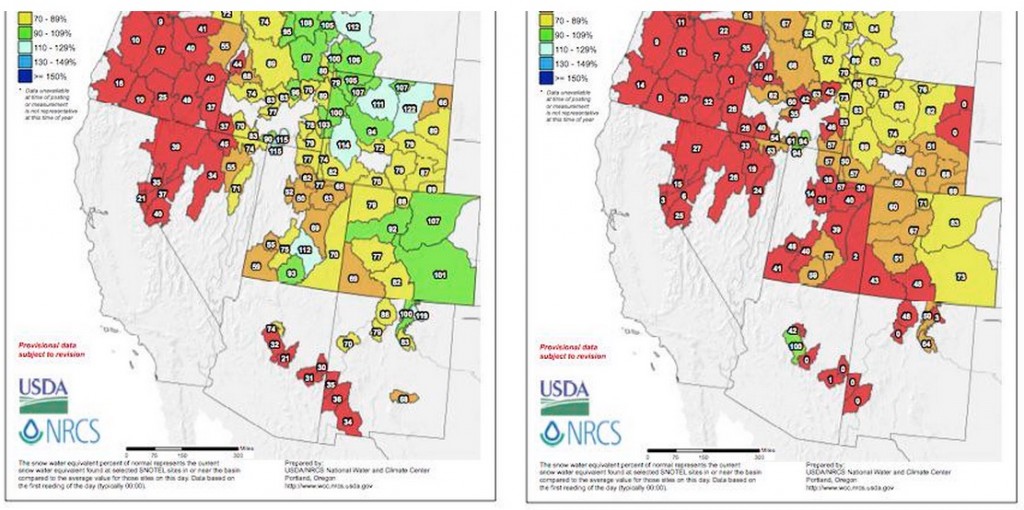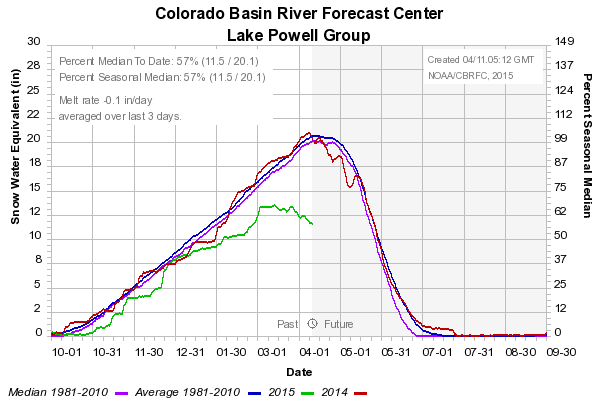update, June 24, 2015: Since this post was written in April 2015, a wet spring has reduced the chance of a “shortage” in 2016. It now appears 2017 is the earliest this could happen. The situation described in rest of the post, detailing what happens when a “shortage” is declared, remains the same.
previously
tl;dr There is a clear possibility of a shortage declaration on Lake Mead in August, which would force a reduction in Lower Colorado River water deliveries, primarily to Arizona, in 2016. Nevada and Mexico would also see small shortages. Neither California, nor the states of the Upper Basin (New Mexico, Utah, Colorado and Wyoming) will see any curtailments.
This is a big deal, but it is almost entirely an Arizona big deal. Arizona currently has the slack in its system to absorb the reductions, including possibly deeper cuts if Mead continues to drop, without major disruptions. The Phoenix and Tucson metro areas are not going to dry up and blow away.
Longer details below:
Continue reading ‘1,075: What a Lake Mead “shortage” would mean in practice’ »





